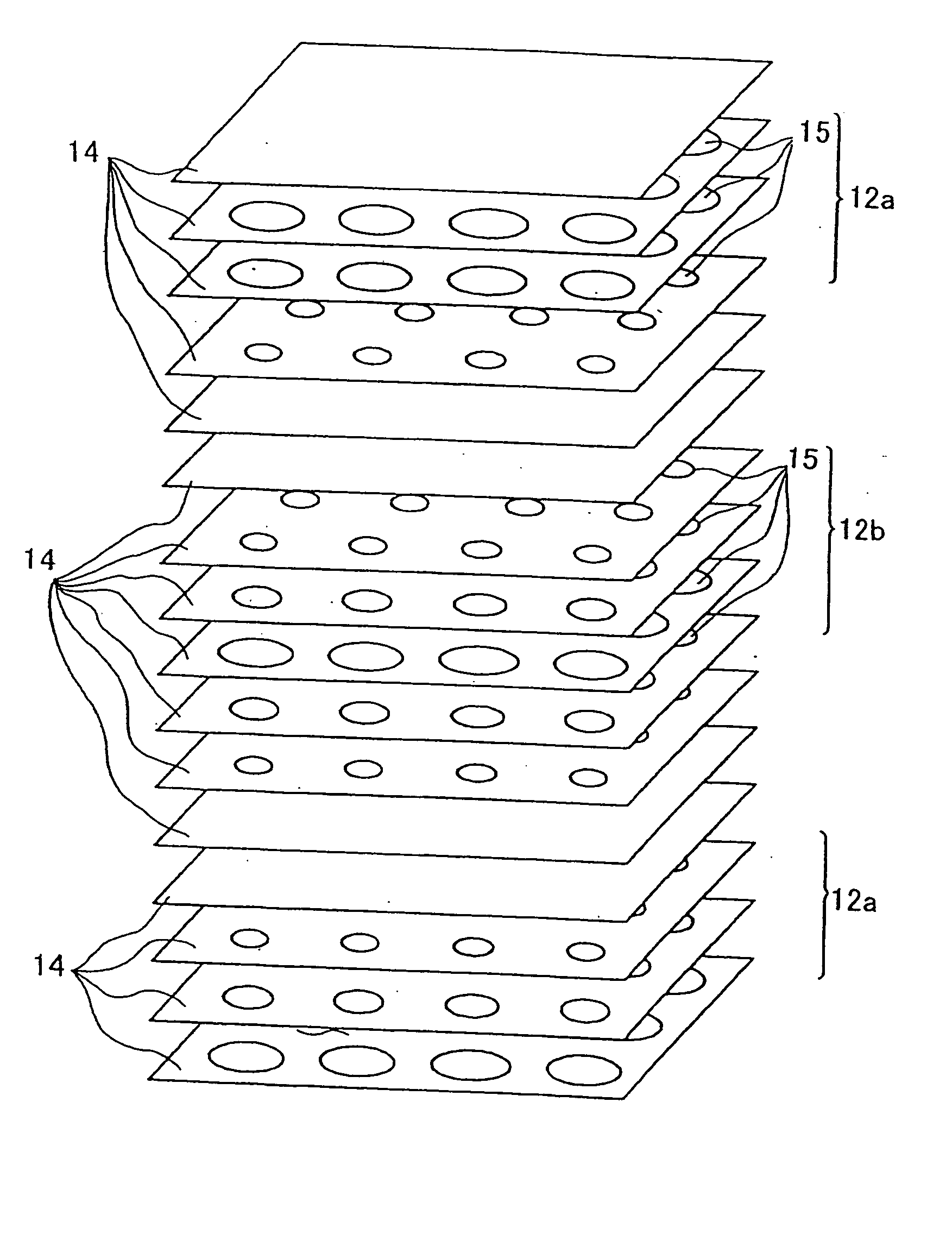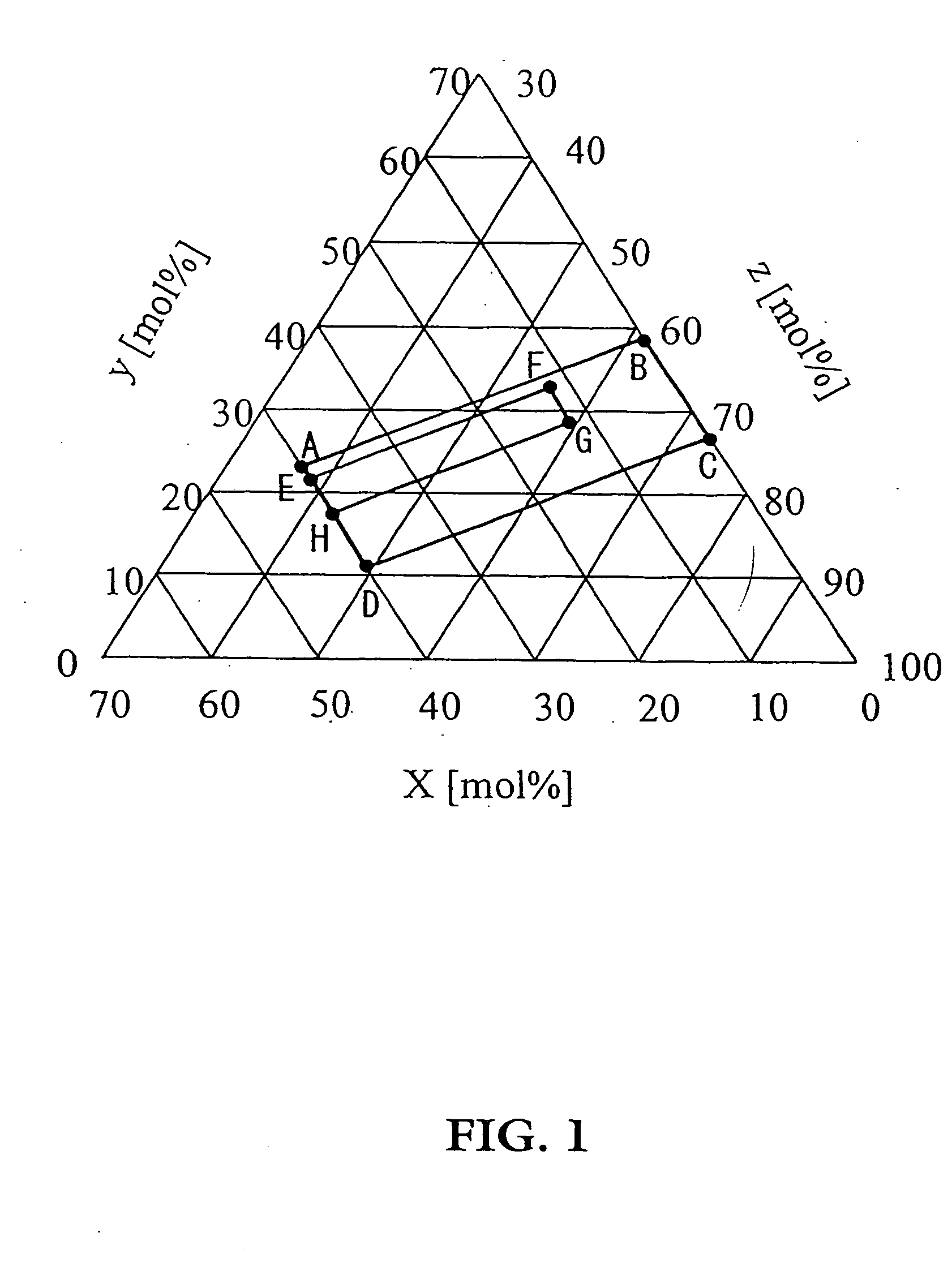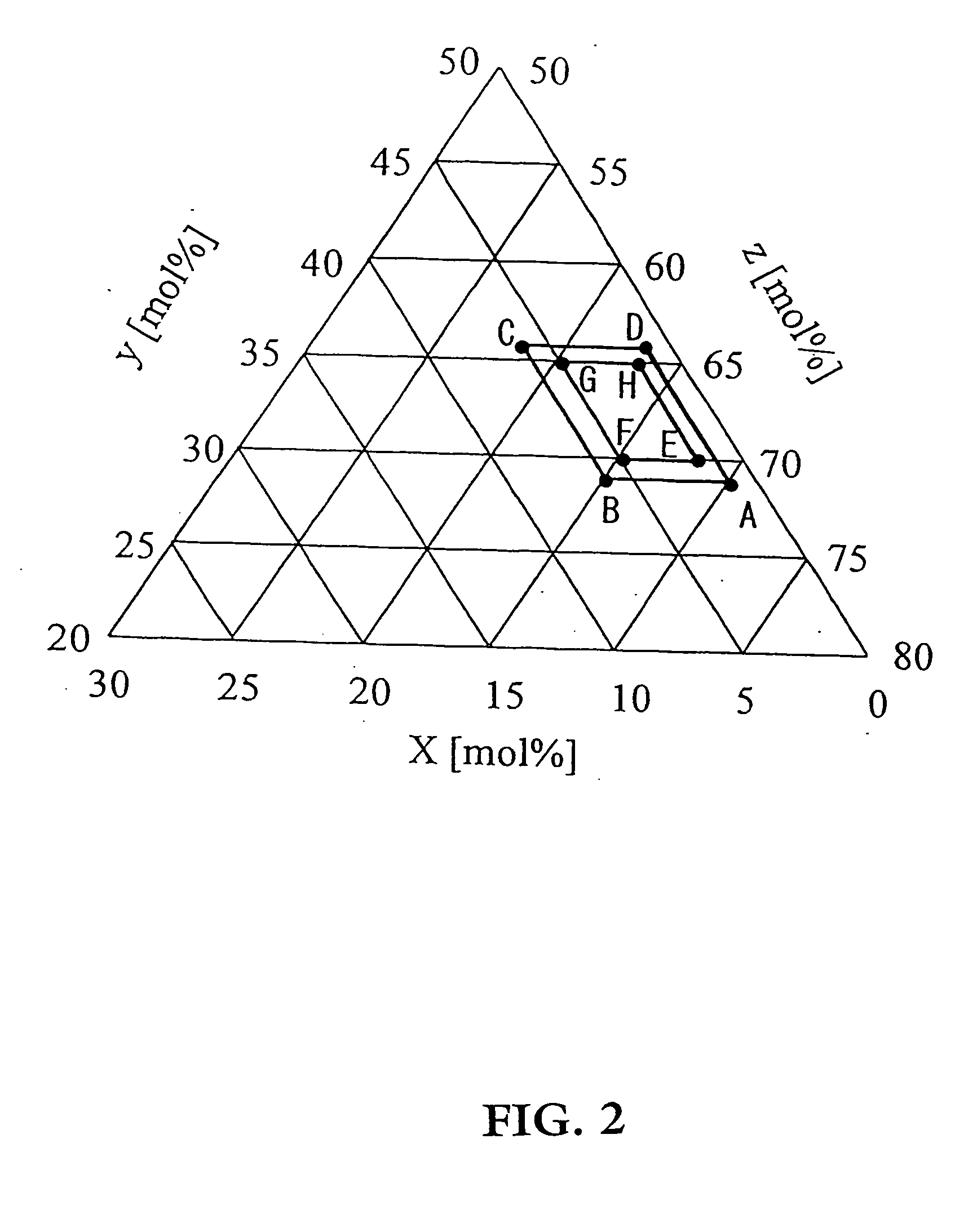Translucent ceramic, method of producing the same and optical devices
a technology of transparent ceramics and optical devices, applied in the field of transparent ceramics, can solve the problems of double refraction, low moisture resistance of plastics, and low refractive index of optical devices using the same, and achieve the effect of miniaturizing the resulting optical device and improving the optical properties of the optical devi
- Summary
- Abstract
- Description
- Claims
- Application Information
AI Technical Summary
Benefits of technology
Problems solved by technology
Method used
Image
Examples
example 1
[0078] High-purity BaCO3, SnO2, ZrO2, MgCO3 and Ta2O5 as material powders were weighed and were wet-mixed together in a ball mill for 16 hours and thereby yielded a mixture having compositional ratios: Ba{(SnuZr1-u)xMgyTaz}vOw wherein u=0.67, x=0.16, y=0.29, z=0.55, and v=1.02. The ratio w after firing was about 3. The ratios x, y, and z satisfy the following condition: x+y+z=1.00
[0079] The mixture was dried, was then calcined at 1300° C. for 3 hours and thereby yielded a calcined compact. The calcined compact was wet-milled in a ball mill with water and an organic binder for 16 hours. Organic binders for use herein may be organic binders that react with oxygen in the air to thereby disappear from the green compact as gases such as carbon dioxide gas or water vapor during sintering in the air at a temperature below the sintering temperature, for example, about 500° C. Such organic binders include ethyl cellulose, for example.
[0080] The milled compact was dried, was filtrated throu...
example 2
[0097] High-purity BaCO3, ZrO2, ZnO and Ta2O5 as material powders were weighed, were wet-mixed together in a ball mill for 16 hours and thereby yielded a mixture having a compositional formula: Ba(ZrxZnyTaz)aOw wherein x=0.03, y=0.32, z=0.65, and a=1.02. The ratio w after firing was about 3.
[0098] The mixture was dried, was then calcined at 1200° C. for 3 hours and thereby yielded a calcined compact. The calcined compact was wet-milled in a ball mill with water and an organic binder for 16 hours. The milled compact was dried, was filtrated through a 50-mesh sieve, was granulated and thereby yielded a ceramic material powder. The ceramic material powder was then molded at a pressure of 2000 kg / cm2 and thereby yielded a disc-shaped ceramic green compact 30 mm in diameter and 1.8 mm in thickness.
[0099] The ceramic green compact was then embedded in a ceramic powder having the same composition as the ceramic material powder in the same manner as in Example 1. The ceramic powder having...
example 3
[0104] High-purity BaCO3, SnO2, ZrO2, MgCO3, NiO and Ta2O5 as material powders were prepared. The material powders other than NiO were weighed, were wet-mixed together in a ball mill for 16 hours and thereby yielded a mixture having a compositional formula: Ba[(SnuZr1-u)xMgyTaz]vOw wherein u=1, x=0.15, y=0.29, z=0.56, and v=1.02. The ratio w after firing was about 3.
[0105] The mixture was dried, was then calcined at 1300° C. for 3 hours and thereby yielded a calcined compact. To the calcined compact was added NiO in an amount of 1.0% by mole in terms of Ni. The resulting calcined compact mixture was wet-milled in a ball mill with water and an organic binder for 16 hours. The milled compact was dried, was filtrated through a 50-mesh sieve, was granulated and thereby yielded a ceramic material powder. The ceramic material powder was then molded at a pressure of 2000 kg / cm2 and thereby yielded a disc-shaped ceramic green compact 30 mm in diameter and 1.8 mm in thickness.
[0106] The ce...
PUM
| Property | Measurement | Unit |
|---|---|---|
| refractive index | aaaaa | aaaaa |
| linear transmittance | aaaaa | aaaaa |
| wavelengths | aaaaa | aaaaa |
Abstract
Description
Claims
Application Information
 Login to View More
Login to View More - R&D
- Intellectual Property
- Life Sciences
- Materials
- Tech Scout
- Unparalleled Data Quality
- Higher Quality Content
- 60% Fewer Hallucinations
Browse by: Latest US Patents, China's latest patents, Technical Efficacy Thesaurus, Application Domain, Technology Topic, Popular Technical Reports.
© 2025 PatSnap. All rights reserved.Legal|Privacy policy|Modern Slavery Act Transparency Statement|Sitemap|About US| Contact US: help@patsnap.com



